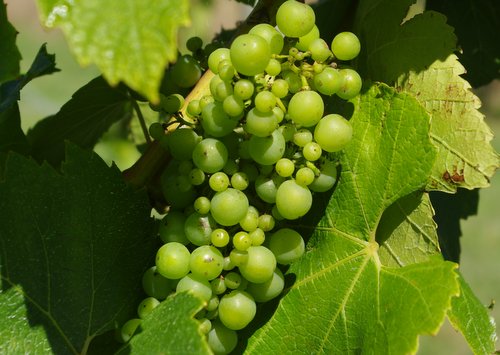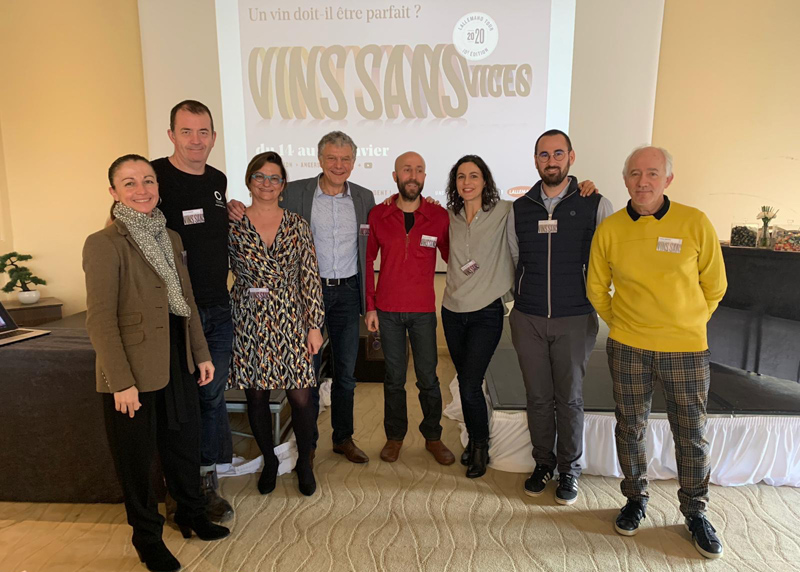
We talk a lot about clones and grape varieties. But what, precisely, do these terms mean?
Let’s first define ‘variety’. A new grape variety is produced when a grape seed has grown into a plant. So the 1500 or so commercial varieties of the single species Vitis vinifera grown worldwide are all the result of the germination of 1500 different seeds.
Each grape variety we have now consist of plants that are descended from that single seed, and which have been selected by humans, and have then been propagated over centuries or millennia by people layering the vines or taking cuttings (known as vegetative propagation, as opposed to sexual propagation).
As Jose Vouillamoz, grape geneticist puts it: every variety has a father and mother. That’s all you need to make a new variety, and it’s also the only way you can make a new variety. If you take a seed from a Chardonnay grape, and grow it, you will have a new variety. But if, over hundreds of years, people take cuttings from Chardonnay grapes and keep on propagating them, they will remain Chardonnay.
Over time, as grape vines of each variety are propagated vegetatively, spontaneous mutations will accumulate in their DNA. These vines are standing out in a field, often in very sunny climates, and will be exposed to a lot of solar radiation. If you have 10 000 vines growing in a vineyard of the same variety, each starting out genetically identical, over the years various mutations will develop and there will be some genetic differences among the vines.
Most of these mutations will be invisible, and most will be neutral or deleterious. But occasionally they will be both visible and desirable. When it comes to taking cuttings for propagating, some vines might be just a little better than their neighbours, and if this is because of subtle genetic differences (rather than, for example, small differences in terroir that then influence the vine’s growth), then these will be captured by the propagation process.
This sort of selection results in a new clone of the variety. Over enough time, a range of such clones might be developed. Sometimes, however, clonal differences reflect nothing more than differing levels of virus infection (the infection will be passed on with the cutting), or perhaps epigenetic differences (heritable changes that aren’t based on DNA sequence changes).
But the accumulation of mutations can’t produce a new grape variety. You might have several clones of Pinot Noir developing each with quite different characteristics, but they will remain Pinot Noir. A new variety is only produced with a mother and a father (vine sex), resulting in a seed that is then grown.
There’s an interesting point here. You could take the parents of a particular variety, where they are known, and cross them, but you wouldn’t get the same variety from this cross. Let’s use Chardonnay as an example. Its parents are Pinot and Gouais Blanc. If you cross Pinot and Gouais Blanc, however, you won’t get Chardonnay. You’ll get a new variety: the genetic mixing up that took place to produce Chardonnay was a unique event; in a similar way, I’m different to my sisters and brother, and even if my parents had had 3000 children they would never have had me again. [As an aside, if you cross Pinot Noir with Pinot Noir and grow a seed from this cross, you won’t still have Pinot Noir. There will be some genetic mixing up in the sex process that will result in a new variety.]
By this definition of variety and clone, Pinot Noir, Pinot Gris, and Pinot Blanc are not separate varieties. They are genetically indistinguishable by all tests. “Pinot is one single grape variety that is very old and that has had many ‘accidents’ in its life—many mutations,” says Jose Vouillamoz. “Some of them were spectacular because they touched the color of the grape varieties and almost nothing else. When I do the DNA profiling of Pinot Noir, Pinot Gris, and Pinot Blanc, since I look at say 10 or 12 different DNA regions, I don’t see where the color mutation has happened. They are all the same in the DNA profile.”
This raises an interesting question. Scientifically, we have a watertight definition of a variety: a vine grown from a seed. But functionally, we can’t live with this in the wine world when it comes to Pinot. It would make no sense from a wine point of view to consider Pinot Noir and Pinot Gris to be the same variety. Legally, the Pinot members aren’t interchangeable, either. Try putting Pinot Blanc into AOC red Burgundy, and you’ll have a tough time arguing your case. So in this case we may have to make an exception.
Overall, though, this scientific definition of clone and variety makes things a lot clearer.
[The picture is of Mendoza clone Chardonnay, also known as Gin Gin: it’s famous for its tendency to show hen and chicken bunch characteristics, with small and larger berries, resulting in intensely flavoured wines.]


Jamie
Good article .
Does this mean DNA analysis can not separate down to a clone level at all?
Also Vouillamoz tells me that Pinot St Laurent is not the same as St Laurent. I have no proof but would like to know the parents of St Laurent?
I’m no a plant geneticist but surely vines that are standing out in the solar radiation do not accumulate mutations universally, surely they are not clones genetically but more harlequins ? I’m a bit confused.
Roger – once there has been a number of mutations in a field- a producer may decide that they will start out replacing a few weak vines with cuttings from the ‘strongest’ vine (which I’m not going to define). As time goes on this single vine continues to be the source of cuttings – and so you can end up with a field or estate with vines that all carry the same mutations.
This is the case with ‘clones’ such as the Tollot Beaut Dijon Clone that is now planted across the Tollot Esate and quite a few others too.
These are then sometimes commercialised by vine nurseries who will take a cutting or two from a prized vine on a prized estate and then grow it, cut it and multiply until they are able to supply it in commercial quantities. So whilst each new ‘clone’ is a bit of a one off (which is what I assume you mean from Harlequin) they are developed into what we think of as clones by they propagation.
What Jamie is not saying (I don’t think) is that two ‘clones’ are clones of each other – they are only this until such a point that a mutation occurs. Rather they are different genetically and may then be cloned to reproduce the benefits he is talking about.
Jamie, yes, but let’s not forget that two clones grafted onto different rootstocks behave divergently as well.
Or that most cultivated grape vines are hermaphroditic.
So a “clone” is not actually a clone, by the sounds of things…
Tim – I guess what I was trying to get across was that in a single vine not all the cells will carry the same mutation(s). Imagine starting off with a vine in which all the cells were genetically identical. Solar radiation (and spontaneous mutations) occur within single cells in that vine and so within a single vine there is genetic diversity (ie a vine is a harlequin). I’m just trying to understand how that is translated into a new “clone”, does the mutation have to be in a meristem so all new growth from that is genetically identical – so you would have different shoots with different genetics on the same vine. It’s complicated but really interesting, in my opinion of course.
Roger, you are right: the mutation would have to take place in a meristem, and then that cell will have to form a new shoot, and then a cutting of that shoot will have to be taken and propagated – and then, if these new plants show desirable characteristics, they can be propagated and identified as a new ‘clone’
It’s a very good article. It could have been made a little clearer, I believe, with a better second paragraph. But it gets better as it goes along. In my vineyard I am struck by the difference plants that are, ostensibly, the same everything but exhibit different growth characteristics. Earlier bud break, vigor, fruitfulness and so on. Once, while walking through a vineyard in 1974 I tasted a berry in a vineyard that was the essence of Zinfandel. I tried to find that vine and spent a some time looking for it. Of course, I wanted to take cuttings from it when it went dormant. I couldn’t find it. I think of it as one of the many mysteries that makes life so wonderful.
Jamie,
Thank you for this most educational piece! The part about the different Pinot mutations being indistinguishable from a DNA perspective is fascinating!
So seeds from a hermaphidite make a new variety yet the DNA is from the same plant?
Lee – you would expect that a hermaphrodite vine would produce a genetically identical copy of itself by sexual reproduction – but in the process of meiosis there’s the possibility of jumbling around genes a bit, and epigenetic effects could result in some differences. I would have to check with a geneticist, but it is a bit more complex than the undergraduate text books – at least that is the impression I had
It’s interesting the many different grape varieties that are out on the market now. It can get to be a little confusing at times trying to pick the right wine…
Jose Vouillamoz was quoted as saying “When I do the DNA profiling of Pinot Noir, Pinot Gris, and Pinot Blanc, since I look at say 10 or 12 different DNA regions, I don’t see where the color mutation has happened. They are all the same in the DNA profile.”
Does this mean that if all the DNA regions were examined, the clones would look different? If so, then why is the term ‘clone’ seen as appropriate to use?